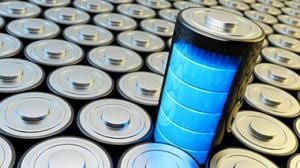 For years, research and development of sodium-ion batteries has taken place alongside lithium-ion batteries as the two storage systems have very similar chemistries. Since the 1990s however, lithium-ion batteries were seen as being more commercially viable, side-lining sodium-ion for twenty years. However, recent research and increasingly varied battery demand has paved the way for the use of sodium-ion batteries in several applications, including opportunities for tin.
For years, research and development of sodium-ion batteries has taken place alongside lithium-ion batteries as the two storage systems have very similar chemistries. Since the 1990s however, lithium-ion batteries were seen as being more commercially viable, side-lining sodium-ion for twenty years. However, recent research and increasingly varied battery demand has paved the way for the use of sodium-ion batteries in several applications, including opportunities for tin.
Scientists at Gwangju Institute of Science and Technology have found that tin can be used to build sodium-ion batteries with ‘outstanding’ energy performance close to matching that of widely used lithium-ion batteries.
The Korean scientists created a sodium-ion battery with a sodium vanadium fluorophosphate cathode and tin phosphide anode. By experimenting with a range of tin-phosphide ratios, the scientists found anodes with a tin-phosphorous ratio of 1:1 had the highest energy density at 280Wh/kg, approaching that of state-of-the-art lithium-ion batteries, which have a 300-360Wh/kg capacity.
Elsewhere in the world, UK-based sodium-ion battery producer Faradion has patented technology that includes some tin in the sodium-ion cathode, rather than the anode. These cathode patents detail the highest energy density oxide-based cathodes currently known for sodium-ion applications. Their sodium-nickel-manganese-titanium-tin-oxygen cathode technology delivered an initial charge capacity of 160mAh/g.
In comparison to other energy storage options, sodium-ion batteries have an energy density 1-5 times higher than lead-acid batteries, and are much cheaper and safer than lithium-ion batteries. These characteristics make sodium-ion batteries ideally suited to stationary energy storage applications such as at renewable power plants. Faradion have, in fact, recently agreed to supply Australia’s residential energy storage market. However, sodium-ion batteries do not yet have the energy density to compete with lithium-ion batteries in electric vehicles.
Our view: Bloomberg estimates that annual installations of sodium-ion batteries will rise tremendously from 6GWh in 2019 to 155 GWh per year in 2030. Moreover, sodium-ion batteries are three times cheaper than lithium-ion batteries over long periods due to the latter’s extended lifespan. Perhaps most important is the incredible natural abundance of sodium compared to lithium. Sodium is the second most abundant ion in seawater and can therefore be harvested from this effectively infinite source. Sodium-ion battery costs could be perpetually low if other metals in the battery are also earth-abundant elements. Alternatives such as hard carbon are in development but the relatively high natural abundance alongside exceptional performance in sodium-ion batteries creates an exciting and growing opportunity for tin.
Gwangju Research Paper, June 2020
< Back to Post Lithium Ion Batteries
< Back to New Technologies
